Skinny Buddha vs Fat Buddha? Why is Buddha fat? Was Buddha fat? Was Buddha really fat? In fact, was the Buddha fat or thin? What is the difference between the Thin Buddha and the Chubby Buddha? Who is the Laughing Buddha at all?
THIS POST MAY CONTAIN COMPENSATED LINKS. PLEASE READ MY DISCLAIMER FOR MORE INFO.
SKINNY BUDDHA vs FAT BUDDHA: WHO IS WHO
Laughing Buddha, Smiling Buddha, Happy Buddha, Fat Buddha, Jolly Buddha, Lucky Buddha, Chubby Buddha … is not the Buddha.
Confused? If you are curious to learn who the Laughing Buddha was and to find out the difference between Fat Buddha and Skinny Buddha, continue reading.
Who is the skinny Buddha?
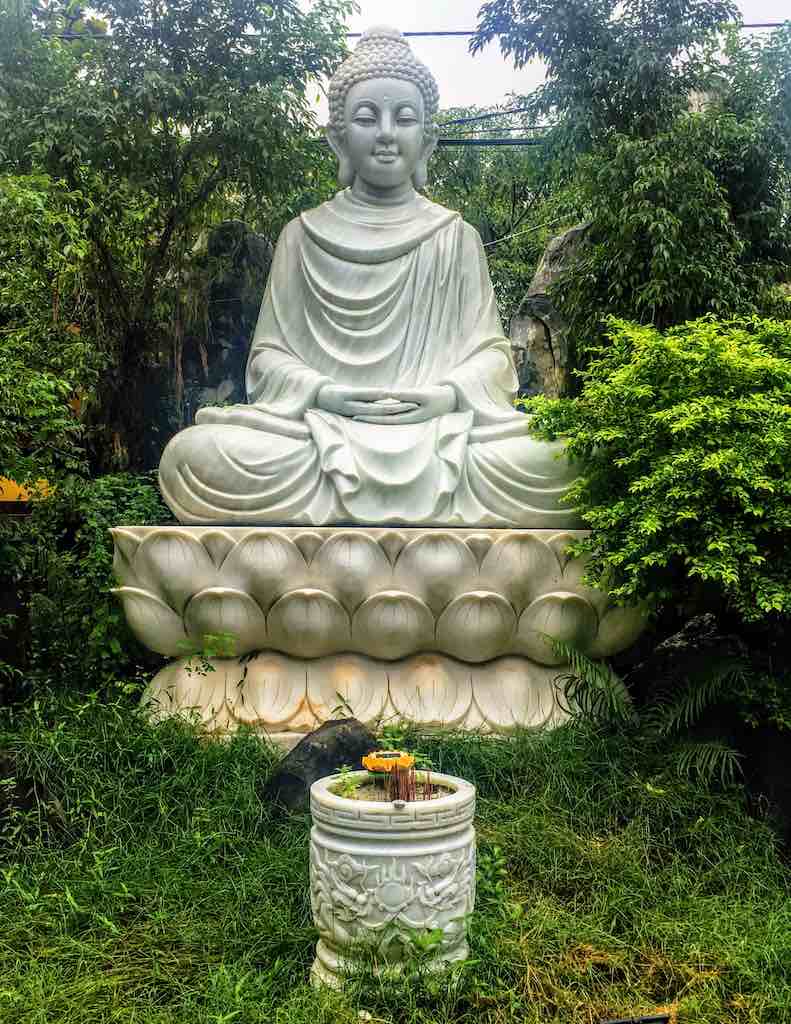
Let me start this story of ‘skinny Buddha vs fat Buddha’ with the skinny Buddha.
The skinny Buddha is the historical Buddha or Siddhartha Gautama. Gautama Buddha, also called Shakyamuni Buddha, lived around 600 BC in Lumbini in today’s Nepal, became Buddha or the ‘Enlightened One’.
He was a spiritual leader according to whose teachings Buddhism was founded.
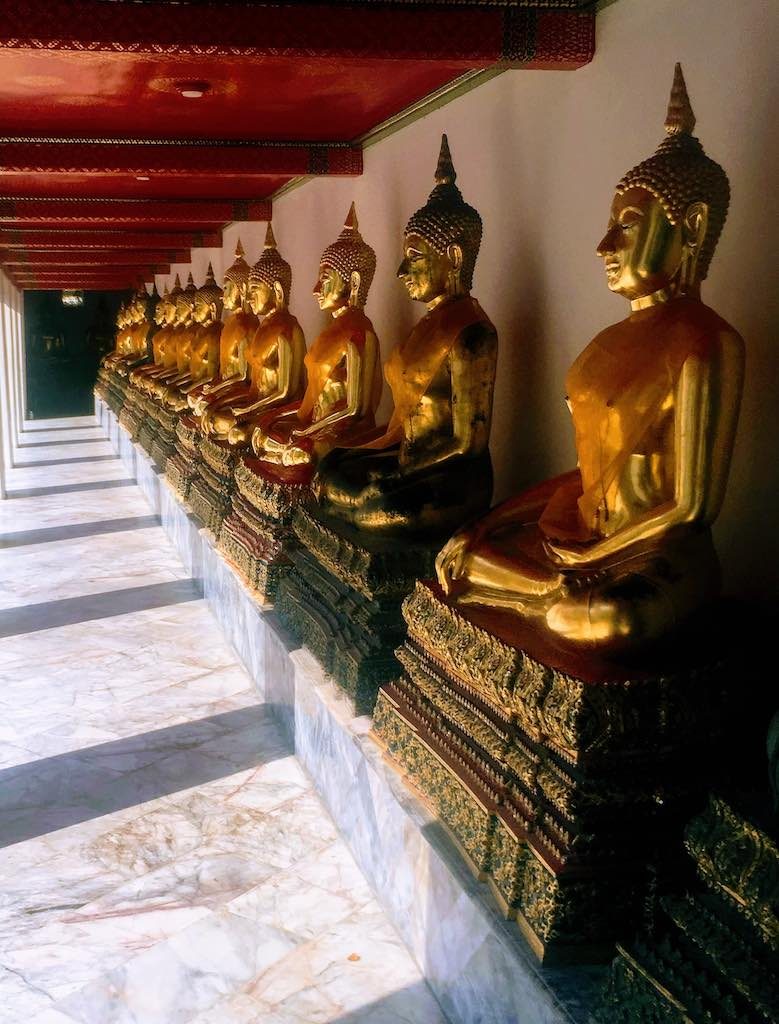
Siddhartha Gautama is usually portrayed as a thin Buddha as he was slim in appearance. Historical Buddha wasn’t fat.
Prince Siddhartha Gautama left his place and went to live in the wilderness as an ascetic, fasting, and meditating for 6 years seeking the way to defeat life’s adversities (pain, sorrow, suffering, loss, sickness, death, impermanence…). Later he abandoned asceticism and found the ‘Middle Way’, avoiding all extremes (asceticism and hedonism) as the path to Enlightenment.
But unlike in Christianity where is only one Christ, there are many Buddhas in Buddhism. According to Buddhism, every person has a Buddha-nature and everyone who achieved enlightenment is a Buddha. Also, Bodhisattva is everyone who takes the path towards Awakening or Buddhahood. And what’s more, Buddhas and Bodhisattvas can have many different forms.
While the historical Buddha is portrayed as a contemplative, serene, peaceful, and skinny Buddha, the Fat Buddha is pictured as open-eyed and laughing. But, who is the Jolly Buddha if not Gautama Siddharta?!
Who is the fat Buddha?
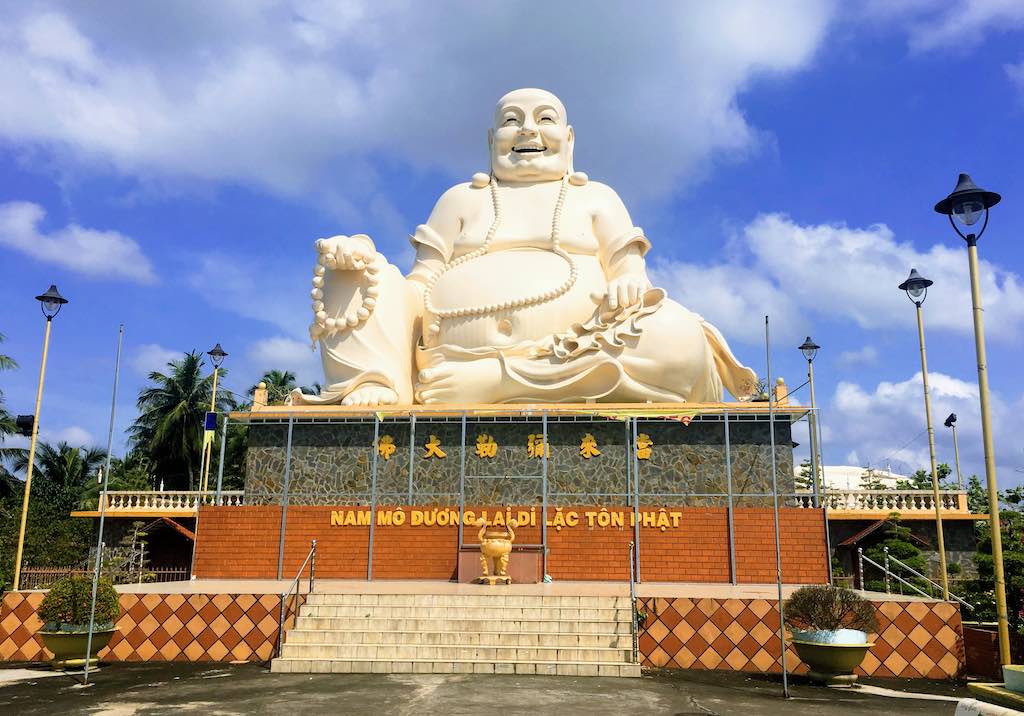
The Laughing Buddha, or the Fat Buddha, was a Zen monk called Budai who lived in China around the 10th century, meaning about 1.600 years after the historical Buddha.
Budai was a bold man with a big tummy, a big smile, large ears, wearing a simple robe, prayer beads, and a large sack. The fat Buddhist monk was known as a good-hearted, happy, and content man of humorous personality, jolly nature, and eccentric lifestyle.
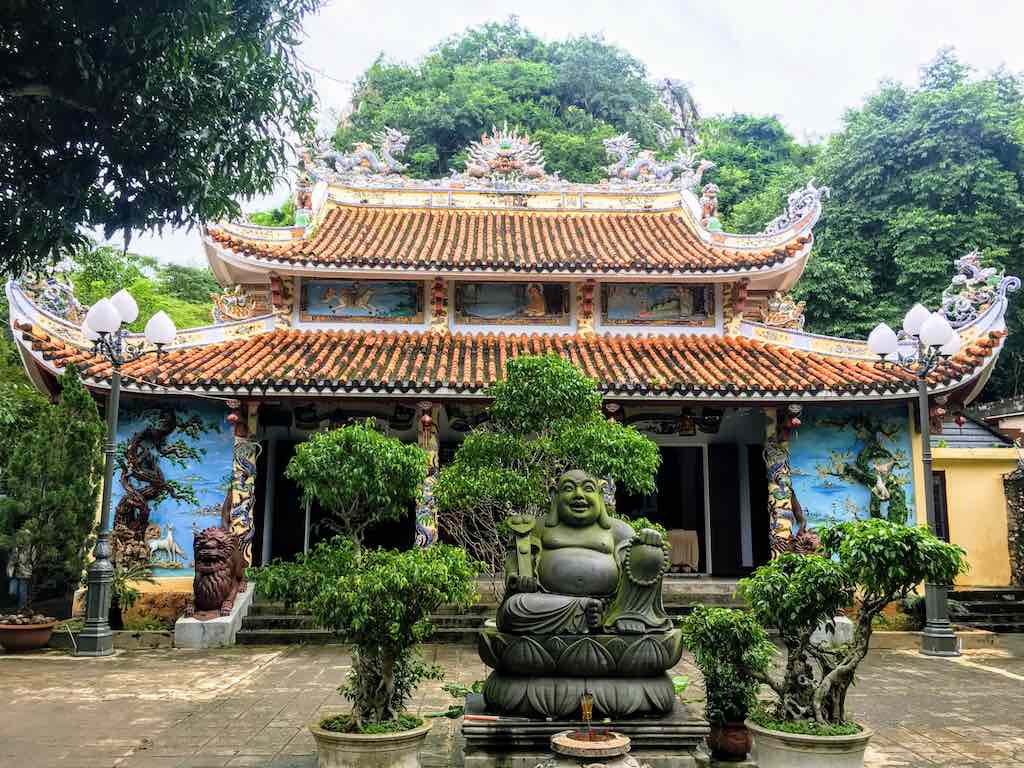
Budai was nicknamed the Laughing Buddha because of his big smile and the happiness he was spreading around him. Furthermore, Budai (the Laughing Buddha or the Fat Buddha) became a famous character in Chinese folktales.
This wandering monk wandered from town to town with all his possessions in a cloth sack hanging on his back. People gathered around him because of his funny look and big smile. He especially loved children and children loved him. In Buddhism, children are believed to have the nature of a god as they live in the present moment, often smiling and laughing, with no ego and no judgemental mind. Budai gave kids sweets out of his beg and taught ‘the giving with joy’, and the philosophy of ‘the more you give, the more comes to you’.
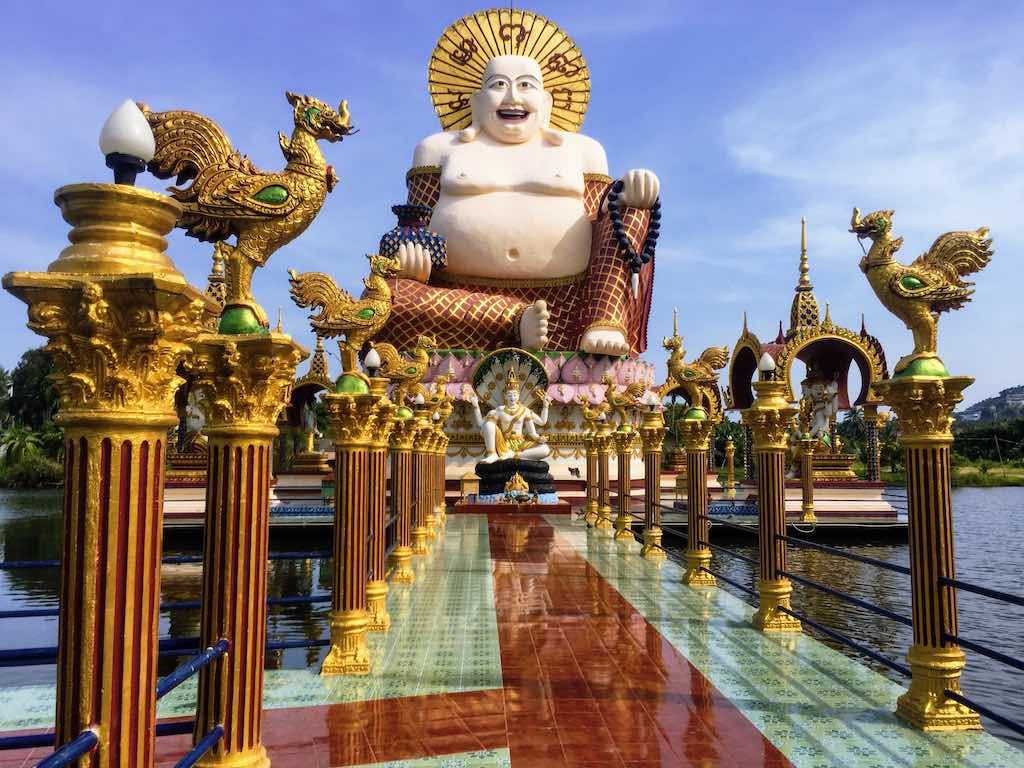
Budai is often depicted with a bag he was wearing. Even his name Budai means ‘cloth sack’ in Chinese.
But, Budai’s sack has also a symbolic meaning. It symbolizes trouble. And although it is easy to solve the problems of others, it’s never an easy task to solve your own problem. That’s because people get attached to their problems and identify themselves with their problems.
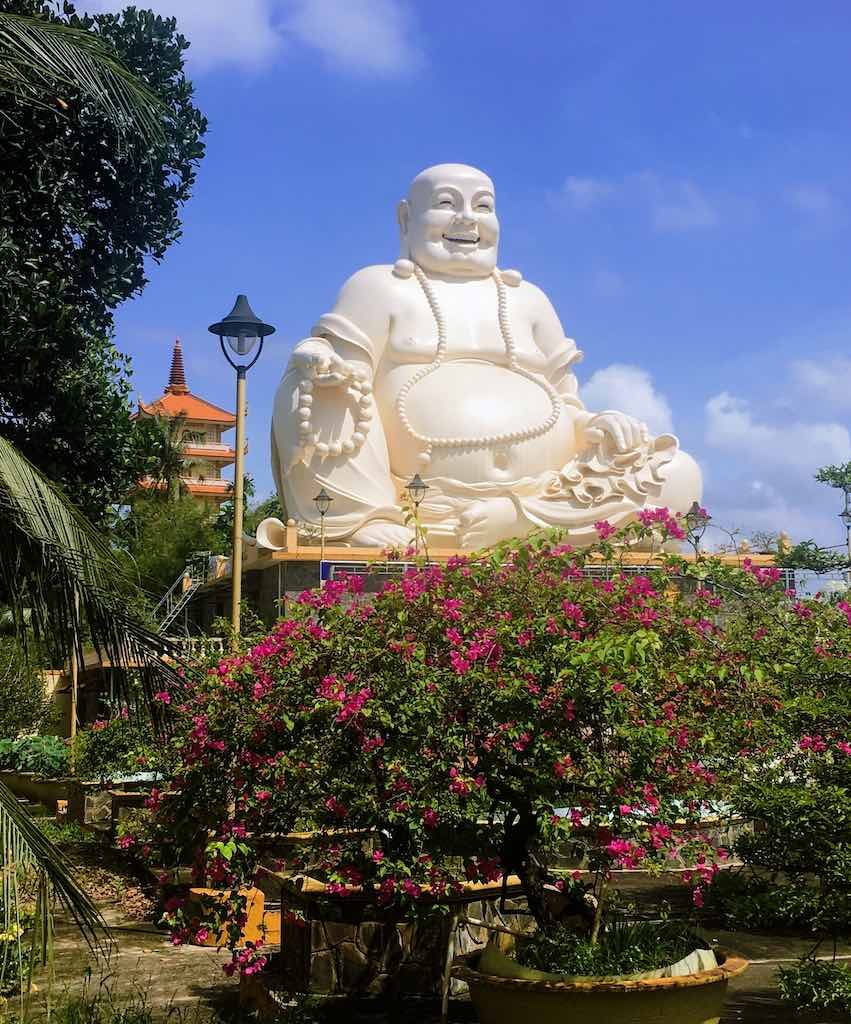
Budai teaches us to ‘keep our begs down’, to detach from our problems, and laugh. In fact, laughter produces enzymes that change the chemistry of our brains. And when you detach from your problems, you can easily find the solution for them.
Budai’s jolly spirit and laughter made people around him laugh too. And while they laughed, they achieved Nirvana. In short, Budai was a Zen master of laughter.
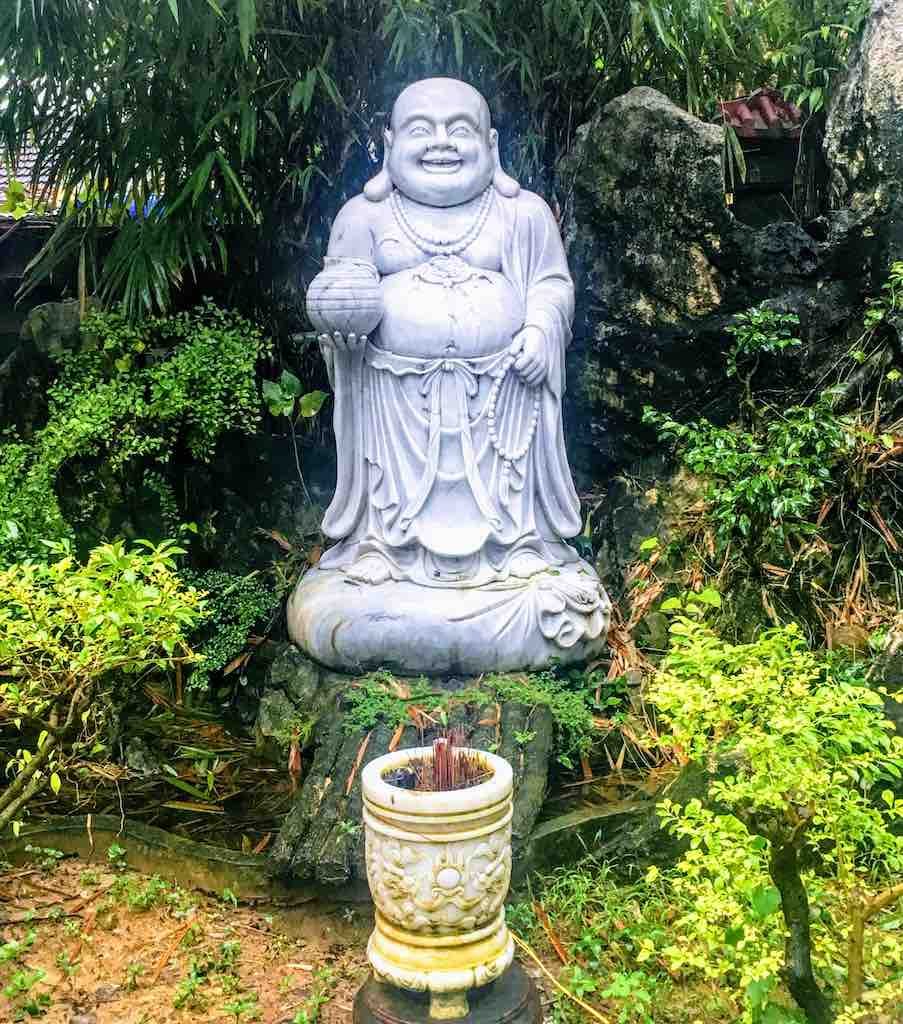
RELATED: 16 Amazing Buddhist Temples in Southeast Asia You Must Visit
Budai taught laughter not only during his life but also in his death. He asked his disciples to cremate his body after his death which wasn’t a tradition at that time in China. But before he died, he put firecrackers and fire rockets into his pockets. And when his disciples lit the fire to burn his body, a firework started. Budai was a Zen master of laughter even in his death.
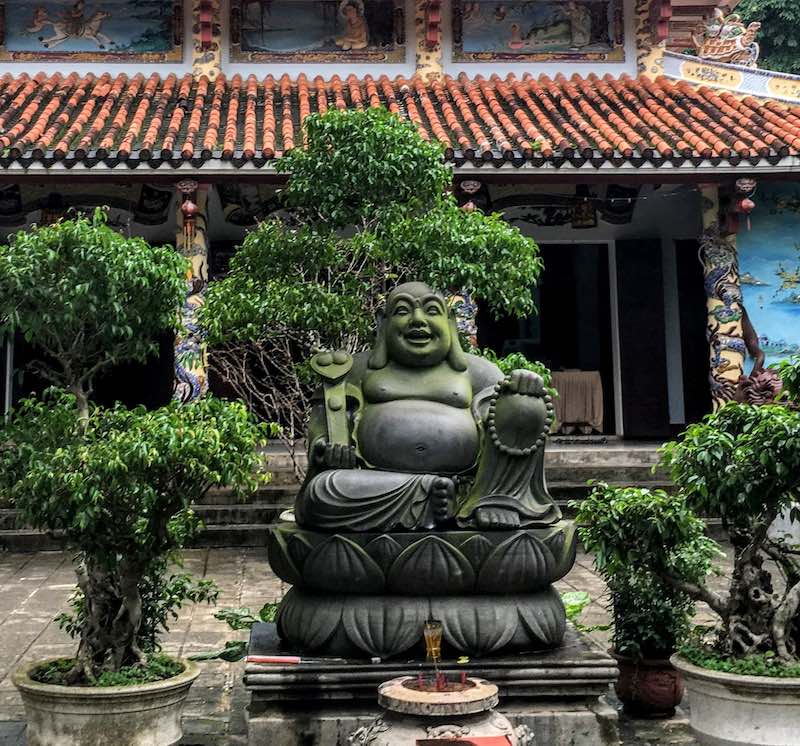
Budai was believed to have achieved Buddahood and has become a Buddha. He is believed to be a reincarnation of Maitreya Buddha, the Buddha of a future age.
Laughing Buddha meaning
Budai became a patron of restaurateurs and bartenders in China: Therefore, the statues of Budai are often at the entrance of Chinese Buddhist temples, Chinese restaurants, and bars.
Chinese Fat Buddha is also known as the Buddha of Happiness, and the Buddha of Wealth. Thus, rubbing the belly of the Chinese Laughing Buddha is believed to bring good luck, wealth, and prosperity.
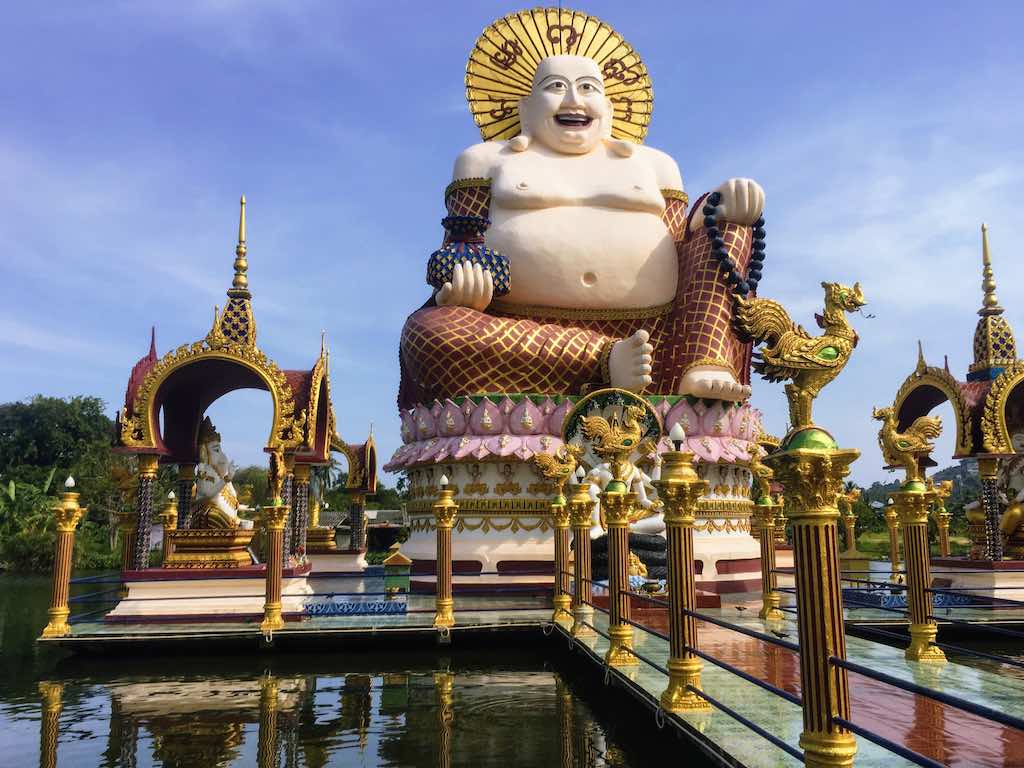
The Laughing Buddha entered also the Buddhist pantheons in Korea, Vietnam, Thailand, and Japan.
Budai in Vietnam is known as Bố Đại. Budai got a significant role in Shintoism in Japan. In Japan Budai is called Hotei and he is one of the ‘seven gods of luck’. Hotei in Shintoism is a god of Contentment, Happiness, Abundance, Good Luck, and a protector of children. The fatness of Japanese fat Budha portrays an abundance of love, compassion, wisdom, virtue … while the bag of Japanese Hotei symbolizes the bag for feeding poor people and people in need.
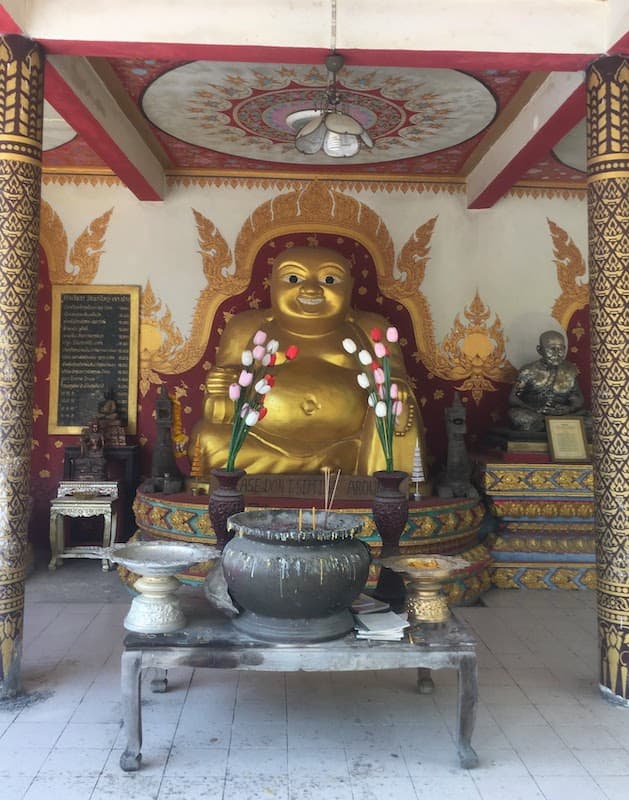
Laughing Buddha statues and Feng Shui
Over time Laughing Buddha (Fat Budda) has become a popular statue in Feng Shui. There are many Laughing Buddha statues in different poses holding different symbols in Feng Shui.
Meaning of different Laughing Buddha statues in Feng Shui
- A statue of Laughing Buddha with prayer beads around his neck is believed to be good for meditation. Happy Buddha’s prayer beads are called ‘pearls of wisdom’.
- A statue of Laughing Buddha with children is said to bring blessings and good energy,
- A statue of Laughing Buddha with a cloth bag takes away your worries and brings happiness.
- Smiling Buddha statue with a ball brings prosperity. Laughing Buddha statue holding a bow brings abundance and good fortune.
- Jolly Buddha statue holding a fan called Oogi takes away negative energy, troubles, concerns, and brings stressless life and contentment.
- A statue of Laughing Buddha with a big hat brings easy-going life with no troubles and no worries.
Fengshui Laughing Buddha Statue for Luck & Happiness

Laughing Buddha sitting on lucky money coins and carrying golden ingot for good luck & happiness

While some can doubt if a Fat Buddha statue can take away worries, stress, troubles, negative energy or not, everyone agrees that Happy Buddha statue (or Budai statue) undoubtedly brings smiles to everyone’s face!

Jolly Hotei Laughing Buddha Garden Statue

I love this Happy Buddha quote:
‘The statue of the Laughing Buddha acts as a good friend. Whenever we are off the track, his smiling face can bring us back to the present moment, to a positive mood.’ ―
PS: Have you smiled while reading this story about Fat Buddha?! I bet next time when someone asks you ‘Why is Buddah fat?’, you will tell them the story about Happy Buddha with a smile. And Smiling Buddha will bring smiles to their faces as well.
Did you like this Budai vs Buddha story? Ok, ok… you just can’t stop smiling … In your case, the mission of Fat Happy Buddha is completed.
YOU MIGHT ALSO ENJOY
- Buddha Park in Vientiane in Laos
- Buddhist temples in Southeast Asia You Must Visit
- Borobudur and Prambanan temples in Indonesia
- Best Temples in Ayutthaya in Thailand
- Planning a Trip to Sicily? Don’t Skip Agrigento (Here’s Why It’s Italy’s Capital of Culture 2025) - July 10, 2025
- Unlock the Secrets of the Valley of the Temples: A Curated Guide to Sicily’s Most Iconic Landmark! - July 8, 2025
- Selinunte Sicily: The Forgotten Greek City That’s Better Than Agrigento - July 5, 2025





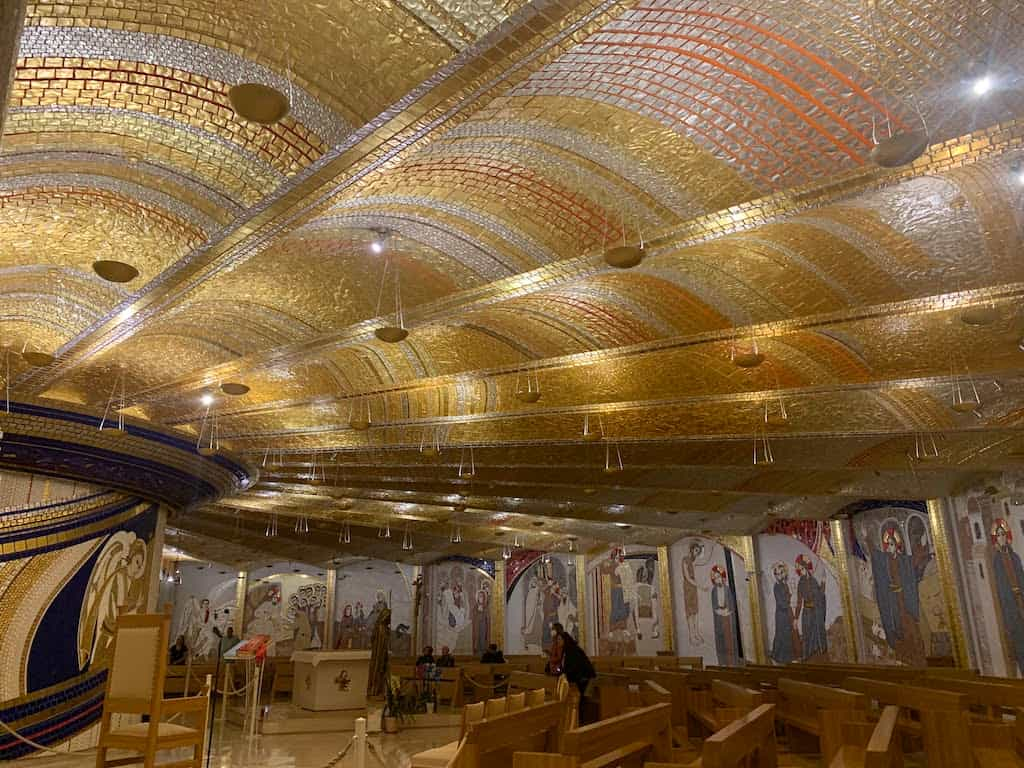
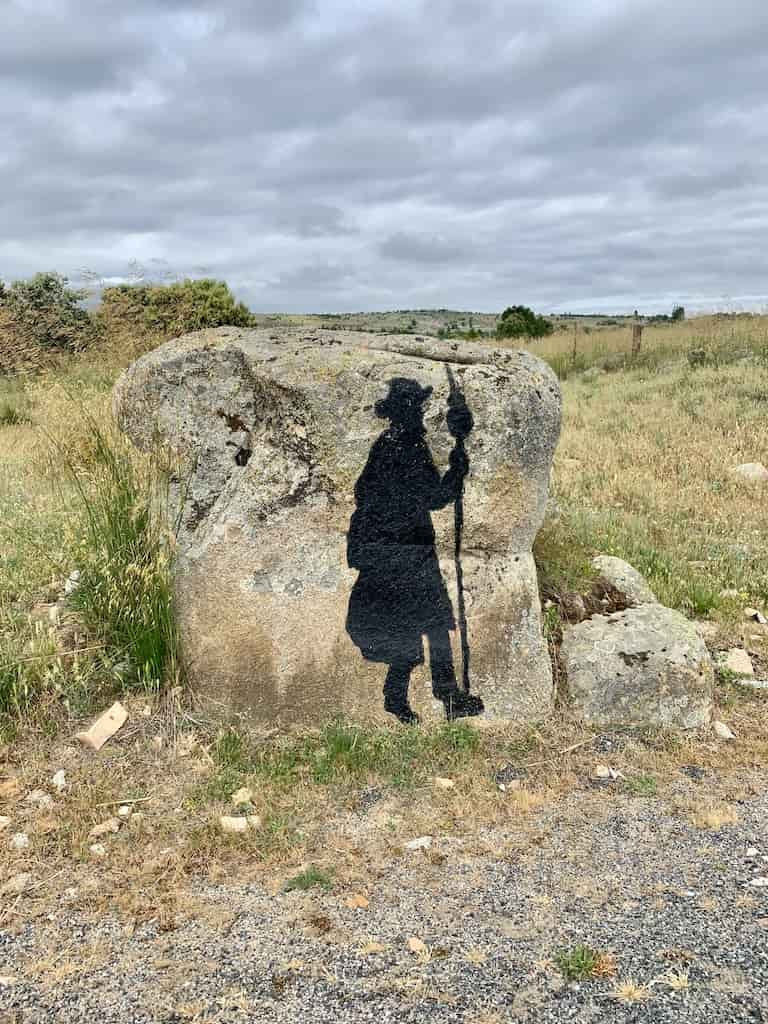

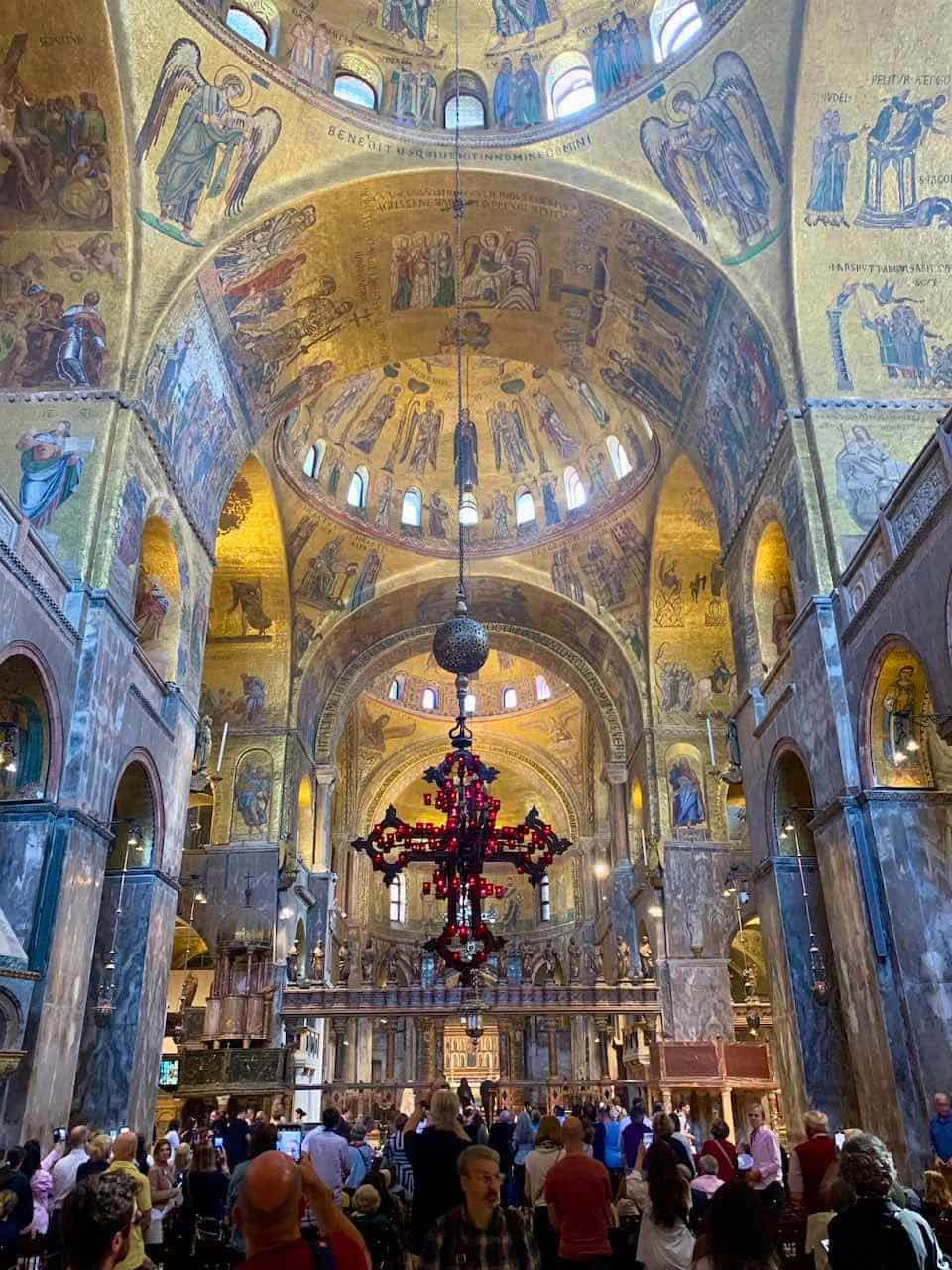

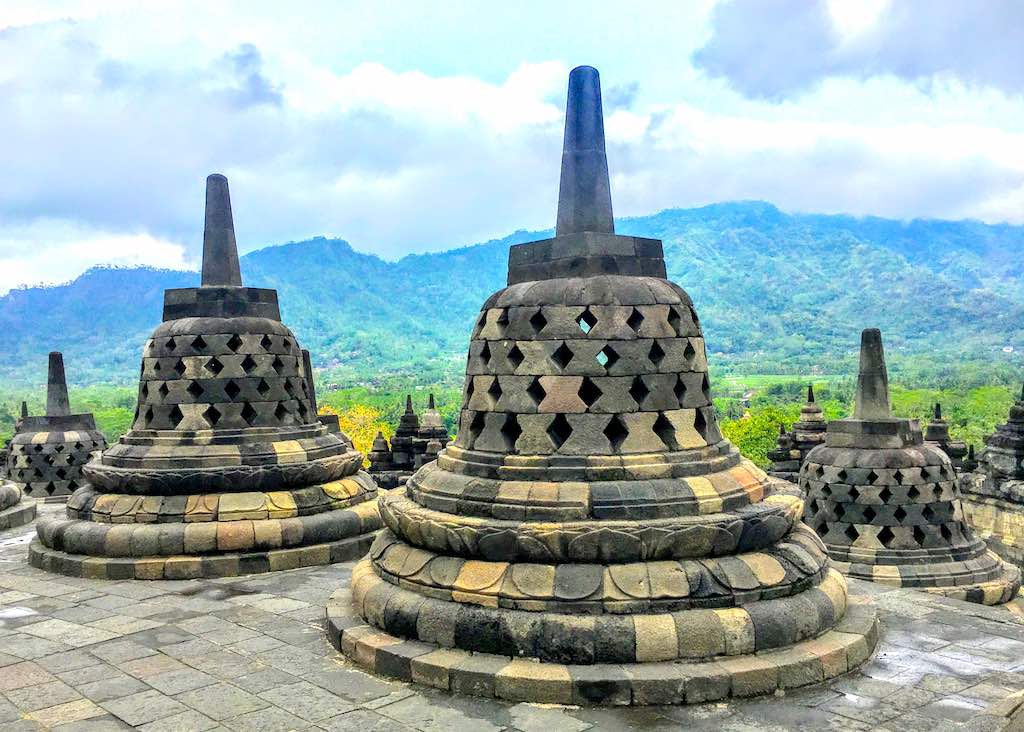
I love the story about Budai putting fireworks in his pocket and then being cremated. Thanks for the explanation of Buddhism and the skinny vs fat and laughing buddha images I have seen.
I love this! Skinny Buddha vs Fat Buddha. I’ve seen this dichotomy but never heard the story. Awesome stuff.
So many Buddhas! One can’t help but feel light-hearted and happy when looking at the laughing Buddha. I loved your description of the differences in Buddhas, very educational.
I learned a lot about Buddha in this post. We have seen a lot of Skinny Buddhas – but did not know these were the ones that Buddhhism was founded on. I am not sure we have seen as many Laughing Buddhas. But I like his philosophy that the more you give, the more you get. And I did not know they were an important statue for Feng Shui. Interesting.
I had no clue about the different Buddha’s. Very interesting to learn. Thanks for the history lesson. 🙂
It certainly can be confusing. I thought that the different portrayals were all from the incarnation of Buddha. Good to see the facts. Not sure about the fireworks as the Buddha’s didn’t wear garments with pockets but prove me wrong!
Hey Elaine,
Of course, the Buddha (Siddhartha Gautama) didn’t wear garments with pockets. He didn’t make the fireworks either. But Budai did. Or, at least a legend says so. 🙂
xoxo Milijana
I loved your post and it was so informative. We were really unaware of all these facts. Honestly, till the day I used to think both Buddhas were the same. Thanks for writing this.
Interesting, I have seen laughing buddha everywhere but never asked myself his story. I like the metaphor about carrying a cloth sack, and how a lot of us carry our problems with us. Thanks for sharing!
I’ve known so little about Buddhism, that this was completely enlightening. Nice to know the differences between the skinny Buddhas and the fat, laughing Buddhas. But what about the giant reclining Buddha?
Hey Tami,
that’s also Siddhartha Gautama, the historical Buddha shown in the position during his last illness. But that’s another story.
xoxo Milijana
Laughing Buddha is my Fav. I always end up buying a statue of him from souvenir shops. So good to know about his jolly nature and how he got this name.
Love the way you have explained the two Buddhas. I have always been a little partial to the Laughing one for the positive vibes it keeps sending. In fact, there was a saying or maybe just a joke, that if you rub the belly of a laughing Buddha, your wish will come true. 😉
An interesting post. I wasn’t aware of the historical connection to China and a monk. I got curious and found this post through a web search because I had made assumptions about Buddhism and one of them was that the skinny monk and fat monk were just representations of Siddhartha at different times in his life or they represented different ways he tried to achieve enlightenment before settling on the middle way.
My understanding was that stopping the cycle of rebirth involved eliminating attachment (which operates on some level like a Western ghost story where the deceased hangs around as a ghost because they haven’t let go of something that ties them to the world – they have unfinished business for example or can’t let go of a loved one — only in the Buddhist sense, the spirit doesn’t hang around as a ghost, they come back in a body to seek out that to which they are attached). Attachments comes by way of desires we have. Therefore, in order to eliminate attachment, one must eliminate all desire.
I figured that the two Buddhas represented ways that Siddhartha tried to attain Nirvana. The skinny Buddha represented a life of asceticism — trying to extinguish desire by denying oneself all desirable things. Likewise, I thought the fat Buddha represented a life of hedonism — terminating desire by fulfilling all desires (and thereby extinguishing them — kind of like how a little bit of candy makes a kid happy, but too much makes them want to puke (effectively ending their desire for candy)).
Then, ultimately, Siddhartha became “enlightened” as to the middle path when he recognized that asceticism and hedonism were both just attachment to desire themselves — they were both obsessions with desire. Both paths obsessed about desire and thus focused on things of this earth and the future and the past.
The better, or middle path, is to simply not worry about desire, but to live in the present where desires will come and go but they will not lead to attachment since living in the present will result in one instant’s desire becoming the next instant’s past, which will not result in attachment.
Hey Julian,
thank you for taking the time to read the story of two Buddhas and to comment on it.
I enjoyed reading your interesting perspectives and profound thoughts on Buddhism and two Buddhas.
Thank you so much for your reflection. I appreciate it a lot!
Milijana
You made a good research about these Buddhas. I just realized I have so many photos of them during my travel in Vietnam and Thailand.
Hi, I researched about the two buddhas and I’ve got the answers I was looking for through your great article. Thanks for sharing.
Theresia
In a place of honour beside my desk in my prayer/healing room is a statue of Gautama Bhudda, thin and calm. In my truck, beside my armchair and beside my breakfast spot, are statues of Budai, the fat, laughing Buddha. Both have a place in my life; both have a place for me in theirs.
To borrow from a different culture: Namaste. I honour the Budha in you.
Thank you so much for writing this article about Buddha. I always thought the skinny Buddha and fat Buddha were representations of him from different countries, and that the real Buddha was the jolly one. Thanks for opening my eyes!
I once was for work in Thailand, walking around with a Thai colleague. I wanted to buy a Buddha statue and I was looking at the fat Buddha. She told me that was the Chinese Buddha and she was really offended; ‘If you want that one, you can buy that one. But it’s not a Thai Buddha’. Haha. So I didn’t buy the fat one 🙂